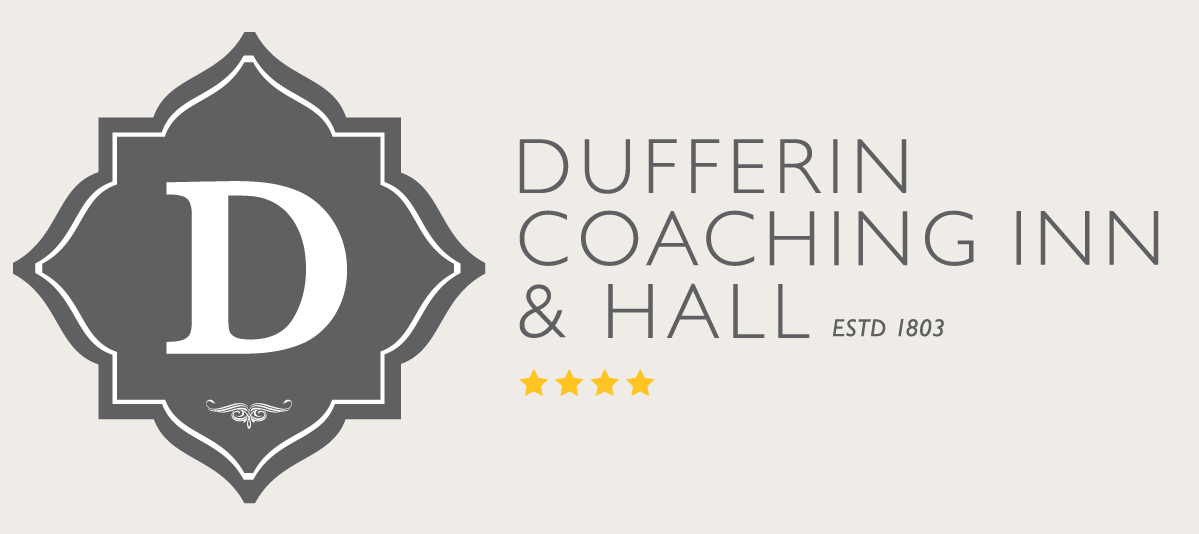Shrigley Mills
Shrigley Main Street - Photograph Credit: Old Shrigley Community
Recently we explored the rich history of Killyleagh and its involvement in World War II with local historian Scott Edgar of WWII Northern Ireland, who highlighted the significant contributions that many brave young Killyleagh men made to the war effort during that time. With our appetite for local history well and truly whet – alongside many of our guests here at Dufferin Coaching Inn – we’ve asked Scott to return to shed light more on one of our neighbouring villages, Shrigley. Unknown to many outside of the immediate area, Shrigley, is a less than five-minute journey from Dufferin and has incredible links dating back to the Holocaust in the 1930s and was a place of comfort and refuge for many.
The village of Shrigley lies 1km north west of Killyleagh, County Down, and its unusual name comes from the manor house in England owned by the Martin family who settled in the local area.
John Martin established a cotton factory at the local mill, which dated back to 1824. By 1828, the six-storey building was lit with gas made on-site and powered by a 35 horse-power steam engine. Over 300 people from the local area were employed by the Martins while the mill was at its peak. Tragically, the cotton mill burned down in 1845 and a flax-spinning mill was later built on the same site.
A cluster of black stone workers' cottages grew up along the streets by the mill gate. All the original housing in Shrigley faced the wrecking ball in the late 1960s and 1970s. Today's village is entirely newly built.
Shrigley Mill - Photograph Credit: Old Shrigley Community
World War Two and The Hungry Thirties
Life in the village of Shrigley changed dramatically in wartime. People living in rural areas did not suffer the same rationing issues as many could grow their own vegetables. Access to local farms helped with dairy, eggs, and even honey.
During the war, refugees from Austria, Hungary, and Czechoslovakia found themselves in the Shrigley area, and as a result of the growing class sizes, an assistant teacher found employment at the local primary school. The 1930s had been tough in the village; the global depression lead to a decrease of work in the mills. Towards the end of the decade, however, the Utitz family arrived in the village and became heroes to many of the impoverished residents of the village.
United Chrome Tanners Staff - Photograph Credit: Old Shrigley Community
Alfred and Isaac Utitz along with Walter Weiniger established United Chrome Tanners. Another Czech Jew, Mr Horenovsky became the first managing director. Not only did they employ many locals, but they secured work permits for many fellow Jews who were then able to escape from Nazi-occupied Europe. By November 1939, 90 people worked in the United Chrome Tannery. There, they tanned sheepskin and cattle hides for use in shoes, handbags, and clothing.
United Chrome Tanners Staff - Photograph Credit: Old Shrigley Community
The tannery became a huge success. Within 30 years, over 500 people worked there, and it won the Queen's Award for Export. It was not the only business to emerge with the influx of refugees. A Mr Biss set up a firm that took the tanned leather and made handbags and belts. Walter Weiniger went on to set up a handbag finishing factory in Belfast and after moving to the city, Alfred Utitz and his family moved into the Weiniger home at Shrigley Lodge.
Flight from Europe
One family in Shrigley who descended from the Jewish refugees were the Vermes. Nicholas Vermes fled Hungary and was one of the last Hungarian Jews to escape the Holocaust. A work permit for United Chrome Tanners allowed him to make a dangerous six-day trek across occupied Europe to Shrigley. His story was made into a documentary film 'The Narrow Gate', which focuses on his return to Hungary after 50 years with his wife Josephine.
Nicholas Vermes left Palanka in Hungary aged 12-years-old. He worked in his grandparents’ tannery in Budapest from 1932 to 1937. There, he watched as more and more Jews fled Europe. He converted to Catholicism as he thought having a Jewish passport would hinder his escape.
While staying in a safe-house in Yugoslavia, Nicholas heard news that his cousin Lily had obtained work in Northern Ireland. He mentioned that if she came across a tannery or factory looking for workers, she should let him know. Only four weeks later he had an offer of work from the Utitz brothers. He accepted the offer and soon received the invaluable permit.
Leaving his old life behind on 11th February, he undertook a journey through Yugoslavia, Italy, Switzerland, and France. On 17th February 1940, he arrived in Belfast, one of the last Hungarian Jews to escape his homeland.
In 1942, Shrigley Mills became an outpost for the US Army. Hundreds of thousands of American troops were stationed in Northern Ireland. Here, they prepared for invasions of North Africa and Normandy. D Company, 13th Armored Engineer Battalion (1st Armored Division) were based in Shrigley.
Today nothing remains of the old village but the Killyleagh area and surrounding towns still boast families with names dating back to the 1930s and those tales of bravery and daring escape. None of which would have happened without the heroic tanners of Shrigley.
For more information on Northern Ireland’s links to the Second World War visit World War II Northern Ireland online or follow Scott and his team on Facebook or Twitter.
All imagery previewed was sourced from the Old Shrigley Community - an excellent resource for those wishing to explore the history of Shrigley.




